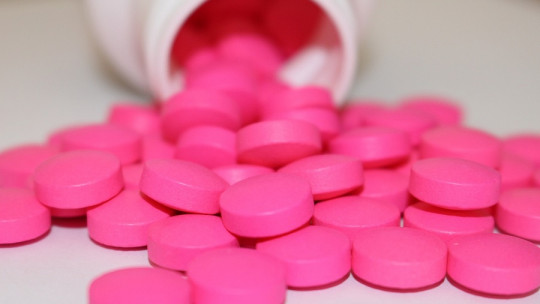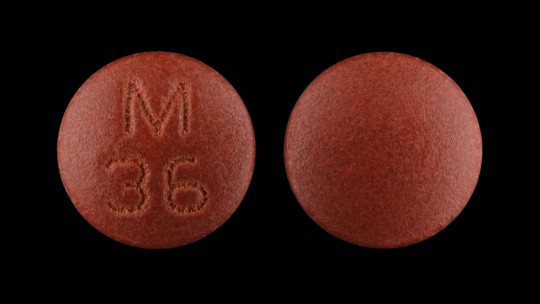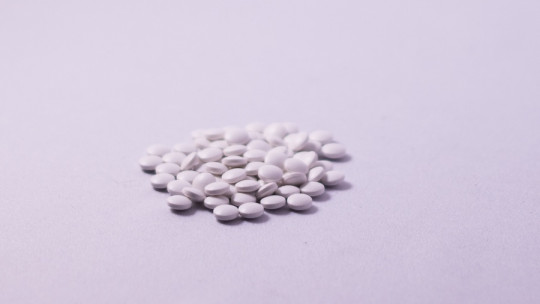There are many people who have some type of allergy. There are those who cannot eat shellfish or peanuts, or who suffer rhinitis, congestion and discomfort from the pollen of various plants every spring. Or they cannot have pets due to allergies to mites or dander present in their fur. And many people are even allergic to some medication.
If this allergy is known, it is because there has been some type of reaction, sometimes even anaphylaxis, to some stimulus. Although sometimes we are faced with something that is simply annoying, the truth is that an allergy is not something anecdotal or harmless, but depending on the case it can have fatal potential.
Although some allergic reactions can be fatal, fortunately we have drugs such as promethazine that allow us to reduce inflammatory processes caused by allergies. This article is about this specific drug, which is also helpful for other types of problems and conditions.
What is promethazine?
It is called promethazine a synthetic antihistamine drug, derived from the phenothiazine family (specifically it is an aminoalkylphenothiazine), whose main function is to reduce the body’s histamine levels and thus treat inflammatory processes.
Although it is not specifically a psychotropic drug, it has the property of being able to cross the blood-brain barrier in such a way that it also has an effect on the nervous system
This drug is considered first generation, being discovered in a similar way to chlorpromazine (the first phenothiazine antipsychotic synthesized). Despite being a phenothiazine, which are often one of the basic structures from which antipsychotics are developed, in this case its action It does not have a neuroleptic effect that allows treating psychotic problems
This drug is metabolized in the liver and eliminated from the body through the urine and feces. It is available in multiple presentations, suitable for its multiple uses. Presentations can be found in the form of tablets or syrup to be administered orally, suppositories for rectal application, and injectables for use intramuscularly or intravenously. Finally, it is worth highlighting the existence of promethazine cream, for topical use.
Mechanism of action
Promethazine acts in our body through the regulation of various types of hormones present in our body
Specifically, its main action is exerted at the level of the histaminergic system, maintaining a relationship of competitive antagonism with histamine. This implies that hinders the action of histamine on the body because it blocks H1 receptors so it has less action and its levels are reduced, something that in turn allows inflammatory processes such as allergies to be reduced.
Its action is reversible (that is, its action does not remain in force over time but ceases after a few hours). In addition, it is nonspecific, which implies that it affects the receptors present throughout the body.
In addition to histamine, promethazine also has an anticholinergic action , something that allows it to have antiemetic properties and contributes to regulating gastric secretions. Although in a minor way it can also affect the aderernergic system.
Main indications
As an antihistamine, promethazine’s main indication is the treatment of medical conditions that cause tissue inflammation. In this sense, Its main indication is the relief and symptomatic treatment of allergic reactions in the different parts of our body.
Its main use is therefore in contexts in which allergic rhinitis, urticaria, angioedema or conjunctivitis arises. It is also useful in the treatment of contact dermatitis, and its use is especially relevant in the case of anaphylaxis.
In addition to its antihistamine action, this substance has an antiemetic effect (that is, it stops or hinders vomiting), which is why it is also used in the presence of severe, prolonged nausea and vomiting. In addition It has mucolytic and antitussive action, something useful in cold and flu processes
It is also commonly used for the prevention and treatment of dizziness of kinetic origin, such as those that appear when traveling by plane, boat or car.
Another of its applications or functionalities can be found in its use as a local anesthetic, since it has sedative properties. In this sense, it has been used to relax the person before surgical interventions, or to treat post-surgery or postpartum pain.
Possible side effects
Although promethazine is a very useful drug for treating the symptoms of many medical conditions, the truth is that its administration can also lead to the emergence of annoying and even dangerous adverse reactions and side effects
One of the most common is sedation and drowsiness. In addition, affecting histamine levels and also acetylcholine levels can cause symptoms such as fatigue, insomnia, blurred vision, dry mouth, motor incoordination , hyperactivity or hypomania, among others. Vertigo, tremors, visual problems, hypotension or urinary retention are other possible secondary symptoms.
It should be taken into account that it can increase photosensitivity, so it is recommended not to expose yourself excessively to sunlight after administration.
It can also cause a slowing of the respiratory rate, fever, arrhythmias, fainting, dyskinesias and even seizures, bleeding, jaundice or problems breathing or ingesting (the latter are serious and require seeing a doctor). It must be taken into account that it sometimes generates uncontrollable movements at the eye level and abnormal positions of the neck and tongue, something that can also be a serious side effect.
Although it is unusual, Some people are at risk of leukopenia, neutropenia, thrombocytopenia, anemia, or agranulocytosis conditions that require rigorous medical control if they arise given their danger.
It should never be applied intra-arterially, since there is a risk of severe arteriospasm and the appearance of gangrene. The subcutaneous route should be avoided as it can cause tissue death or necrosis.
Contraindications
Among the many conditions for which this drug is contraindicated, those who have an allergy to promethazine, phenothiazines or any of their components stand out first, as well as those who suffer from jaundice, bone marrow depression or severe kidney or liver failure. Also It is contraindicated in case of epilepsy or in cases of Reye syndrome
In the case of intravenous application, it is important to keep in mind that it should never be injected into the artery but rather into the vein, given the risk of arteriospasm. It is not recommended in patients with glaucoma or urinary problems. Other subjects who should take special caution in its use are those who present hypotension or have a tendency to it or those who suffer from prostate hypertrophy.
Also It is contraindicated in babies and children under two years of age , since it has the ability to slow down or even stop the respiratory rate (something that can have fatal repercussions). In general, it is not recommended except in cases of extreme need (the costs and benefits of its administration must be evaluated with the doctor), in cases of pregnancy or breastfeeding since the baby can be excreted and cause severe problems, nor in minors. severely dehydrated or acutely ill.
Finally, the feasibility of treatment with promethazine should be consulted with the doctor if other drugs are being used, since they may present interactions. Among others, it should not be mixed with alcohol, MAOIs, neuroleptics from the same family, sedatives, morphine or depressant substances. Finally, it should be taken into account that due to its sedative effects, driving or using heavy machinery should be avoided.









